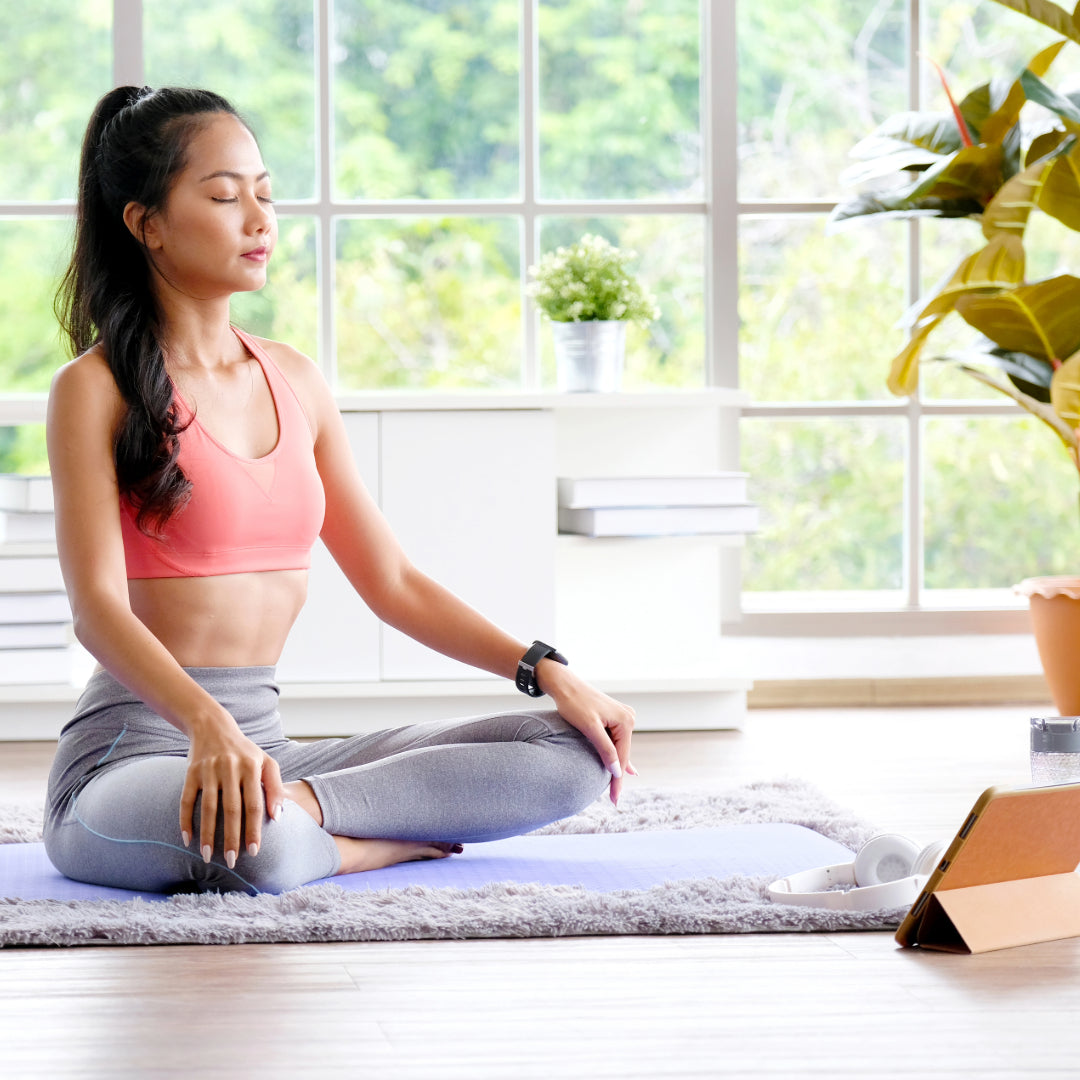
Ultimate Couch to 5K Training Plan: Become a Runner in 6 Weeks
Introduction
Starting a new fitness journey can be daunting, especially if you're transitioning from a couch potato lifestyle or you've never run before. The thought of running even a short distance like 3.1 miles may seem overwhelming, leaving many beginners unsure of how to begin or anxious about potential injuries. The Couch to 5K program, often abbreviated as C25K, offers a structured and gradual build-up to running a 5K, making it less intimidating for new runners.
Designed by Josh Clark, the C25K program is specifically tailored to help absolute beginners transition from walking to running without stress, using a mix of running and walking to gradually increase stamina and fitness. Over the course of 9 weeks—though some adapt it to 8 or even 6 weeks—the program guides you through three runs per week, with each week introducing slightly more challenging intervals of running, interspersed with periods of walking. This proven method not only boosts your fitness level but also prepares you mentally and physically to run a full 5K distance by the end of the plan.
This article will delve into the essentials of the Couch to 5K training plan, offering detailed week-by-week guidance, nutrition and hydration tips, and advice on choosing the right pair of running shoes. Whether you’re new to running or looking to get back into it after a break, this training plan is designed to motivate you to hit your stride and achieve your goals with confidence. We’ll also tackle common challenges such as finding time to train, staying motivated, and preventing injuries, ensuring you have all the tools to successfully run your first 5K and perhaps even spark a lifelong passion for running.
What is Couch to 5K?
The Couch to 5K program, commonly abbreviated as C25K, is a revolutionary running plan designed to transform a complete novice into a 5K runner in just nine weeks. This beginner running plan was created by Josh Clark, who sought to help his mother get into running with a manageable approach. Since its inception, the Couch to 5K plan has gained massive popularity worldwide, endorsed by fitness organizations and even health services like the NHS.
Couch to 5K is not just about running; it's a comprehensive running program that combines running and walking to gradually build a beginner's endurance and strength without overwhelming them. The plan calls for three runs per week, with each session guided by simple instructions telling you when to run and when to walk. This method helps prevent common running injuries associated with overtraining and makes the process accessible to people of all fitness levels.
The success of the Couch to 5K program among beginners is largely due to its gradual progression. Starting with a mix of more walking than running, the program slowly transitions into more continuous running segments. This approach is so effective that it has not only cultivated a community of new runners but also inspired a plethora of Couch to 5K apps and podcasts designed to assist users throughout their training. For many, the Couch to 5K training plan isn't just a pathway to completing a 5K run; it’s the beginning of a healthier, more active lifestyle.
Benefits of Starting the Couch to 5K Plan
Health Benefits of Running
Running is one of the most efficient ways to enhance cardiovascular fitness and improve overall health. Regular participation in a running program like Couch to 5K can lead to significant improvements in heart health, increased lung capacity, and better blood sugar control. Additionally, running aids in weight management by boosting the metabolic rate and burning significant calories. For those new to running, the gradual increase in demand ensures that these health benefits are gained safely, minimizing the risk of heart strain.
Mental Health Benefits and Achieving Goals
The mental health benefits of running are equally impressive. Engaging in a structured training plan like Couch to 5K can greatly improve mood and decrease symptoms of depression and anxiety due to the release of endorphins, often referred to as the 'runner's high'. Furthermore, the program provides clear goals and milestones, which can be incredibly satisfying to achieve. This sense of accomplishment boosts self-esteem and can often motivate runners to set and achieve even higher goals beyond their initial 5K, contributing to a cycle of positive mental health.
Preparing to Start Your Training
Getting Medically Cleared
Before embarking on any new exercise routine, including a Couch to 5K running plan, it’s crucial to get medically cleared, especially if you have pre-existing health conditions or have been inactive. Consulting with a healthcare provider can help ensure that running is safe for you and provide guidance tailored to your health needs. This preventive measure helps mitigate the risk of injury and ensures that your body can handle the new physical demands safely.
Choosing the Right Running Gear
Selecting the appropriate running gear is essential for both comfort and injury prevention. Start with a good pair of running shoes that offer adequate support and fit well. Specialty running stores often offer gait analysis to recommend the best shoe for your running style. Additionally, choose breathable, moisture-wicking clothing to keep comfortable and dry. For those new to running, consider downloading a Couch to 5K app; these apps provide structured training plans and motivate you with coaching tips. Apps like these are invaluable for keeping you on track and enhancing your running experience.
The 6-Week Training Schedule
Adapting the traditional Couch to 5K program to fit a 6-week schedule accelerates the progression slightly, making it a bit more intense but still manageable for most beginners. The plan consists of three workouts per week, ideally with a rest day in between to allow for adequate recovery.
Week 1: Getting Started
Objective: Introduce your body to running. Schedule: Run for 1 minute, walk for 1.5 minutes, repeat 8 times (total of 20 minutes). Tips: Focus on maintaining a steady, manageable pace; it’s not about speed.
Week 2: Building Endurance
Objective: Increase the running intervals. Schedule: Run for 1.5 minutes, walk for 2 minutes, repeat 6 times (total of 21 minutes). Tips: Start to gently push your comfort zone, but ensure you can still hold a conversation while running.
Week 3: Enhancing Strength
Objective: Longer running sessions to build strength. Schedule: Run for 3 minutes, walk for 3 minutes, repeat 4 times (total of 24 minutes). Tips: Incorporate a rest day after each session to aid muscle recovery and prevent overtraining.
Week 4: Consistency
Objective: Consolidate gains and improve consistency. Schedule: Run for 5 minutes, walk for 2.5 minutes, repeat 4 times (total of 30 minutes). Tips: Keep a consistent pace across the runs to build your aerobic capacity.
Week 5: Increasing Intervals
Objective: Longer uninterrupted running intervals. Schedule: Run for 8 minutes, walk for 5 minutes, repeat twice (total of 26 minutes). Tips: Focus on form, especially as fatigue sets in. Keep your shoulders relaxed and arms swinging naturally.
Week 6: The Home Stretch
Objective: Prepare for the full 5K. Schedule: Run for 20 minutes, walk for 2 minutes, run for 10 minutes. Tips: Start visualizing completing the 5K, building mental as well as physical endurance.
Nutrition and Hydration Tips for Runners
Proper nutrition and hydration are key components of a successful training regimen, especially for runners who are preparing for a race like a 5K. What you eat and drink can significantly impact your performance and recovery.
Fueling Your Body for Running
To ensure you have the energy for both training and recovery, focus on a balanced diet rich in carbohydrates, proteins, and healthy fats. Carbohydrates are your body’s main source of energy during running, so include plenty of whole grains, fruits, and vegetables in your meals. Protein is crucial for muscle repair and growth, so incorporate sources like lean meats, fish, eggs, or plant-based proteins such as beans and legumes. Healthy fats from nuts, seeds, and avocados should also be included to help with inflammation and overall health.
The Importance of Hydration
Staying hydrated is crucial for maintaining performance and preventing injuries. Runners should drink water throughout the day, not just during and after workouts, to keep hydrated. The amount of water needed can vary based on your individual needs, weather conditions, and the intensity and duration of your runs. A good rule of thumb is to drink enough so that your urine is light yellow in color. Consider adding electrolytes to your water on longer runs to replace salts lost through sweat.
Common Challenges and How to Overcome Them
Every runner faces challenges, whether you’re new to running or have been lacing up for years. From lack of motivation to injuries and adverse weather conditions, these obstacles can impede your progress. However, with the right strategies, you can overcome these hurdles and keep your training on track.
Lack of Motivation
Maintaining motivation can be tough, especially when progress feels slow. To stay motivated, set clear, achievable goals like completing a 5K without stopping, and celebrate small victories along the way. Joining a running group or partnering with a running buddy can also provide a supportive community and accountability. Moreover, vary your running routes to keep the scenery fresh and engaging.
Injuries
Injuries can derail even the most dedicated training plans. To minimize injury risks, ensure you're wearing the proper running shoes and incorporating strength training and flexibility exercises into your routine. If you do experience pain, don’t ignore it. Allow adequate rest for recovery, and seek advice from a healthcare professional if the pain persists. Remember, it's better to miss one week of training than to be forced out for months.
Adverse Weather Conditions
Running in bad weather can be demotivating and, at times, unsafe. On days with extreme weather, consider indoor alternatives like treadmill running or cross-training activities that can keep your fitness level up without braving the elements. When you do head outdoors, dress appropriately for the conditions—light, breathable layers for heat; waterproof, warm layers for cold and wet conditions.
What to Do After Completing Your Couch to running 5K
Completing the Couch to 5K program is a huge achievement, but it’s just the beginning of your running journey. Staying active and continuing to set new challenges are crucial to keep improving your fitness and enthusiasm for running.
Maintaining Fitness
After the initial 5K, continue incorporating running into your weekly routine to maintain your fitness level. You don’t need to increase the intensity or duration of your runs immediately. Consistency is key. Regularly mixing running with strength training and other forms of cardio can help maintain a balanced fitness regimen and prevent burnout.
Progressing to More Challenging Runs
Once you’re comfortable with 5K runs and are looking for more challenge, gradually increase your distance. A natural next step is training for a 10K. There are numerous training plans available that build on the foundation laid by the Couch to 5K, designed to increase your endurance and prepare you for longer distances.
Setting New Goals
Setting new running goals post-Couch to 5K is essential for continued progress. Whether it's improving your 5K time, running a new personal best, or preparing for a 10K, having clear objectives keeps the motivation alive. Participate in local races, join running clubs, or set a goal to complete a certain number of runs per week. These goals give you something to strive for and help structure your training post-Couch to 5K.
Conclusion
Over the past six weeks, our ultimate Couch to 5K training plan has equipped you with the tools to transform from a beginner runner into a confident participant ready for your first 5K. We’ve covered everything from the basics of the Couch to 5K program to detailed weekly training schedules, nutrition advice, and strategies for overcoming common challenges. Each step has been designed to gradually build your strength and endurance, ensuring you not only start running but continue to progress in your fitness journey.
Now that you have the foundation, it's time to put it into practice. Download a Couch to 5K app from the App Store to help guide your training sessions, track your progress, and receive motivational tips from a virtual running coach. Whether you are just getting running or looking to build on your current fitness, these tools are invaluable for keeping you on track.
We encourage you to start your running journey today. Share your progress, experiences, and insights with the community. Each step you take is an inspiration to others just beginning their path. Remember, every runner starts somewhere, and today is your day to take that first stride towards a healthier, more active lifestyle.







